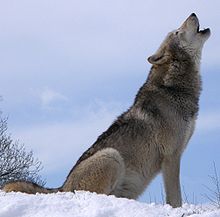Now we start out with one large, meat-eating land carnivore called eustreptospondylus. They were about as big as a giraffe. Now these animals aren't as big as t-rex, probably not even as big as an allosaurus. Maybe bigger maybe not.
But let me tell you something, these carnivores would still eat plenty of food. And I don't know, maybe one small, juicy, rhamphorhynchus. Rhamphorhynchus are these small pterosaurs. They may be a bit small but they're worth the fight.
But now we will talk about the underwater world. Now underwater: one huge enormous reptile is about to strike. The reptile is called liopleurodon. The liopleurodon is the biggest meat-eater that ever lived. And this large predator is about to strike the ophthalmosaurus. The ophthalmosaurus is in the ichthyosaur family. And they have good night vision probably because of eyes the size of softballs. But even with those softball sized eyes, they won't be able to see the enormous, monstrous liopleurodon who is about to strike.
But wait a second, liopleurodon sees another animal. It's called hybodus, a very small shark but it lived for quite a long time. These creatures survived from the Permian period to the Cretaceous. But even the small hybodus will never be able to fight the liopleurodon. Liopleurodon eat sharks like we eat fish. Well we do eat sharkfin soup. And the shark takes its last look and then WHAM! the shark gets eaten.
But what's in the shadow over there? It's the largest fish ever. It's called leedsichthys. It's a pretty slow swimmer and it's a very, very, vulnerable animal. One of them has fallen behind and it's getting eaten alive by some hybodus and a marine crocodile called metriorhynchus. Metriorhynchus is one of your stranger crocodiles. It's like the leedsichthys is getting mosquito bites. Eventually leedsichthys will die. 8 hours later, now leedsichthys is dead. And now the liopleurodon are snacking on that humungous leedsichthys.
And well well looky here it's the ophthalmosaurus and he's trying to make a snack out of these ammonites. Ammonites are related to today's nautilus. Now imagine it as a unpoppable ballon. and when it is poppable, it will squirt out the air, which is the ink.
(image of Eustreptospondylus from walkingwith.wikia.com)
(image of Rhamphorhynchus from kidsdinos.com)
(image of Liopleurodon from seamonsters.wikia.com)
(image of Opthalmosaurus from http://www.abc.net.au)
(image of Hybodus from http://www.abc.net.au)
(image of Leedsichthys from bbc.co.uk)
(image of Metriorhynchus from bbc.co.uk)
(image of an ammonite from fossilmoldsandreplicas.com)















